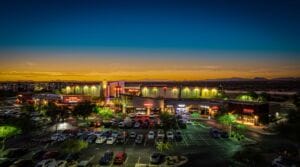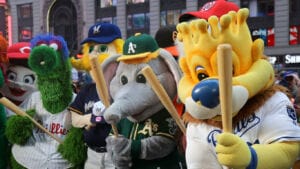We will not be exaggerating if we say the fashion industry has overtaken the world tremendously. Fashion is everywhere. And as technology is seeing a golden period in reaching the heights of innovation, we are sure fashion will be a basic necessity for individuals in coming years. With the advancement in every phase, fashion and beauty are considered fast-moving and dynamic industries that adopt innovations faster.
Now imagine integrating fashion with technology; the result will be mind-blowing tools for taking this to the next level. VR clothing try-on, body measurement tools, augmented reality in fashion retail have already been introduced in the market and brought a revolution in what we perceive fashion as.
If the data by ABI is to be believed by 2022, over 120,000 stores will go for augmented reality giving a paradigm shift in how we consider the shopping process today. There are numerous instances where companies have implemented these technologies in fashion.
Let’s have a look at some examples!
1. Burberry’s marketing efforts by adopting AR in fashion
The UK’s fashion brand Burberry has collaborated with Google to bring in-store shopping experiences to users’ digital devices. For example, it has made it possible for Burberry to provide 3D images of Arthur check sneakers and Black TB bags to the customers looking for them online. So on typing the relevant product name on Google, users will get 3D snaps of the products. Collaborating with a giant like Google widened its reach to an untapped audience.
It made the audience feel more connected, boosted personalized luxury commerce, and showcased the customer’s realistic view of products before purchasing them. It reduced the likelihood of product returns.
2. Gucci enabled virtual try-on shoes at home
The Italian company has implemented a virtual try-on for its shoe category. Gucci created an iOS application powered by AR technology which enables customers to try their Ace sneakers collection virtually at the comfort of their homes. The idea was implemented way before the pandemic but has proved to be the most significant way to pull in higher sales.
Moreover, Gucci partnered with the multimedia instant messaging app Snapchat to provide a virtual try-on facility. As a result, it boosted customer engagement, and Gucci became the first luxury fashion brand to drive higher sales with an AR tool by collaborating with the social media platform.
3. Magic mirror by Timberland
Timberland, the outdoor fashion retailer in Poland, created a “magic mirror,” an AR-powered mirror that works by dressing the individuals in the chosen garment from a given collection. So this made it easy for the people to see themselves in the outfit they might be interested in. Timberland devised the project by integrating with Lemon & Orange by enabling customers to try on the specific items from their latest collection.
Wrapping Up
The above mentioned are a few examples of augmented reality in fashion retail. Also, you can find many more examples and how it’s changing the world. All these technologies are proficient tools if they are sustainable and don’t harm the environment around us. So, to ascertain we are on the right path, it is essential to ensure sustainability in the apparel industry so that it grows without causing perils to the environment.



